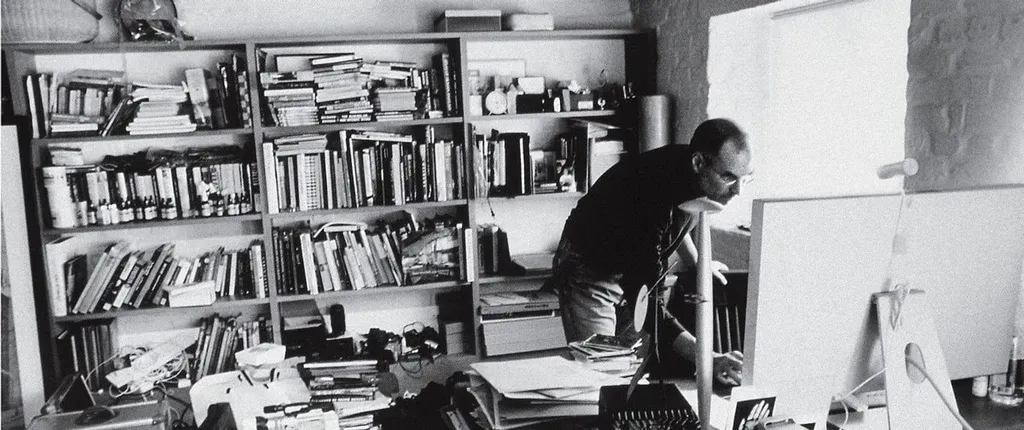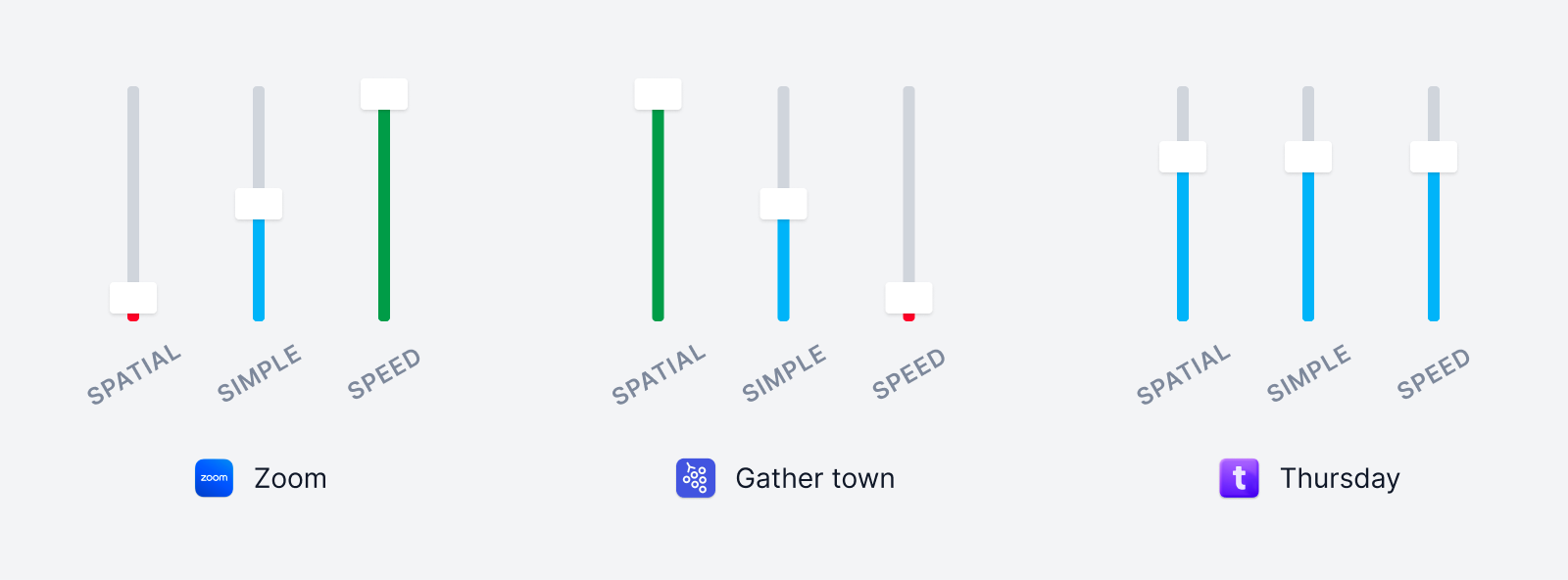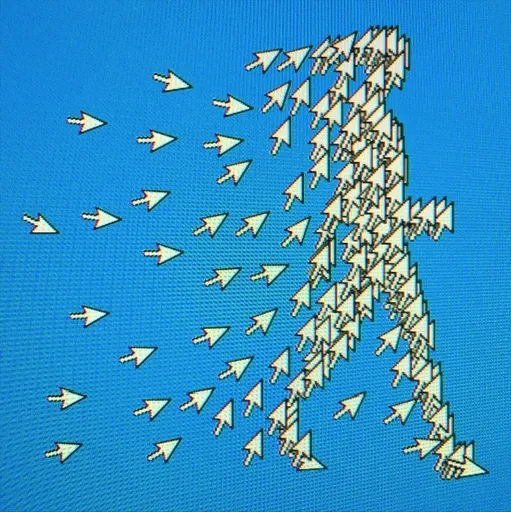Spatial socializing for remote teams
With the future of work going remote, everyone was busy building tools to make ‘work’ better. But what about everything else? What about casual chats, coffee breaks, and game sessions with the team? With Thursday, we tried solving for the parts of remote work that no one was solving for. Making remote work socialising 10x better! Lounge inside Thursday is a social space for teams working remotely to spend sync time together, chilling, talking, and playing mini-games. Everything but work.
Remote sucks (kinda)
It comes as no surprise, as great as remote is and has its advantages, remote work is exhausting, and straight-up boring compared to working in an office. With a pandemic, the disadvantages were exaggerated. People were forced. Unwillingly locked into their homes with no touch to the outside world. It took a hit. On productivity. Collaboration. Work. We had no choice but to do what was healthy for everyone, stay locked up.
But the pandemic is still here as of writing this. And, offices started taking remote as a noteworthy candidate for default mode of work. Adapting to survive. Soon enough things were clear, remote is here to stay. Once people had their work environment set up, their timings adjusted to the way their body works, it was game over. No one wants to commute 2 hours, to work in a distracting office with bad coffee (we want to brew our coffee). The great resignation occurred.
All this while, the tech industry got busy making remote work better. Collaboration? Welcome to FigJam, Miro, Mural, InVision, Whimsical, and even apple’s very own app for white-boarding(?). Video conferencing? Google Meet, Zoom, Around, Microsoft teams. Documentation? Google docs, Notion, Craft, Coda. You get the point, it had been over a year since the pandemic started and there were a plethora of options to make remote work better. But things were not working. There was a missing puzzle piece and the workers were still unhappy.

Or is it our tools?
Remote might suck, but is it just because of our current situation of bad tooling? And not just tools, our whole world has been designed around the idea of a working model of an office. Roads, infrastructure, timings.

We now have good tooling available to do our work remotely, but we left out one important aspect of work. Socializing. Work plays an integral role in our modern lives. And rightly so, If we spend half of our waking life around people we work with, it was only natural for socializing to become a great part of the work we do. We’re social creatures. But the Pandemic made it all vanish. You are no longer socializing in the workplace. Other than the occasional fun Friday zoom calls every team started keeping. Replacing our real-life socializing, which is multifaceted and layered, it’s how we move around the office, and talk with people individually (or in small groups) with a catchall group video call of 50 people is plain wrong.

Don’t get me wrong, I think Zoom is a great product (with its design caveats). It replaces in-office meeting/conference rooms. But we started doing all kind of things on zoom that it wasn’t designed to handle well. Zoom isn’t built for remote work and a collaborative environment. It is not for 1-on-1s, Design reviews, socializing! If you look at the essence of the product, Zoom isn’t that different from Skype from 20 years ago. The same disembodied heads, Exhausting talks, Awkward silence, grid-based structure.
While we removed meeting rooms with zoom, emails with slack, and our whiteboards with Figjam. No one replaced our communal and social space. Our game room and kitchen refrigerator. Our bookshelf and coffee table. Our lounge.
At a surface level, one might think that we have all this in our homes now, but these spaces didn’t just serve a utilitarian function. They created room for spontaneity. Space for relationships to flourish. With these spaces missing, remote would remain boring and an uninspiring mode to work in.

Creating a digital (social) space
With this hollowed-out feeling left by remote work, we started thinking about this problem space more deeply. We wanted to create a social space for remote teams. One that tries to accommodate the communal space of an office.
We knew existing tools being used by teams like zoom lacked spatiality. They felt confined, rigid, and stuck.

Once inside you’re stuck in your box. The only way to express and emote is through your face, and to take in your team members’ expressions, you have to look at a dozen faces together at a time. This is stimulus spillover. Too much information being sent by one medium. Unlike the real-world, where your vision is fixated on one face at a time. Even audio is awkward. The hmms and ahs are muted by noise reduction, awkward silences are frequent and uncomfortable when looking at many faces. There is chat, but that has too much friction. Not only in the way of accessing it to type your message, but in thinking about what to type. There will be a history of what you say (unlike in real life). It adds social pressure. On zoom, your disembodied faces lack your body language, the way your hands are moving, the knuckle cracks, the changing of legs being crossed.

There are new-age tools focused on remote socializing. They've realised the need for spatial-ness in digital interfaces. Like major hit, gather.town I think they’re doing a great job of giving users a multitude of ways to express. Audio, Video, Non-traditional chat, Body language(?) in the form of your avatar walking across the room. They took the real-world metaphors to an extreme (spatial skeuomorphism?). But the problem with such one is to one metaphors is that they grow old quickly with the users learning them and now they just become, intrusive with a lot of friction. To express excitement, I have to move my character across the room up and down with my keyboard. Which is exciting at first, but the friction quickly outgrows the novelty.
Real-world metaphors are great, but software should be fast. It should not get in our way. Rather than us doing the work for it, it should do the work for us.

We found a balance between intuitiveness, spatiality, and speed in the way of User cards inside a space confined by walls. Inspired by the live cursors of collaborative tools, but giving it more weight. User cards is a real-life metaphor for you, in the form of an interface representation of a card. You’re your card, your card is you. To express, you move yourself. To express in Lounge, you move your card. It is all controlled by your cursor, it moves at the speed of your thought. You don’t need to translate your thoughts into ←→←→ keys like in gather.town or wait for your teammate to stop speaking before you can express it like in zoom. You just turn your User card into a quick chat box to talk without waiting or interrupting someone speaking.

Letting go of video (and other interface decisions)
With this simple material (the User-card), we set out to design the space for remote teams to socialize together. Starting with something as simple as the color of our walls was contemplated. Walls aren’t pure-white in real life.

Zoom is optimised for an always-on video experience. Which is not the answer for long-form socializing. This is why video is a second-class citizen in Lounge. Audio first always for larger group gatherings. And a Stage for when you need to show your pearly whites. On stage, you talk and focus on one (or a few) videos at a time. Not 20 faces staring into the nothingness.

Audio (and video) isn’t the only way to express. A quick chat is always there to pass a comment while someone is on the stage talking. And it is effortless, available in a single click and without any pressure as it is all in the moment, like having a casual chat in real life. There are reactions for the more often occurring expressions.
Limited space, like in your office. There isn’t a room which works well for 2 and 200 people at the same time. Digital tools can stretch their capabilities, but not to such an extent. Zoom does not work for both 2 and 200. This is why Lounge is designed to work well for 5-50 people. Muse, a spatial thinking canvas, was a major, might I say, muse for this concept. Muse unlike other canvases has limitations, not put on because of technical limitations, but to represent offline limitations you would face on your desk/whiteboard.
The easiest, natural way to express is through moving your cursor (and hence Usercard). Whether it be a decision. Excitement, or just following another teammate silly.
Validating our hypothesis
Lounge is one of its kind product built from 0. And all these micro/macro-decisions remain a hypothesis until validated, which is why we built and launched Thursday (with lounge) at the end of October, 3 months after the initial research started. We launched on Product Hunt, and it gathered a lot of eyeballs, we were the #2 product of the day, nominated and the finalists for golden kitty awards, and gathered 1200+ upvotes.
ENDING IT WITH A CUSTOMER QUOTE:
“A lot of tools have tried to create the energy that Thursday has, but I don't think that anyone has come close to what Thursday is doing.”
— Sarah Park, Head of people, Geneva






